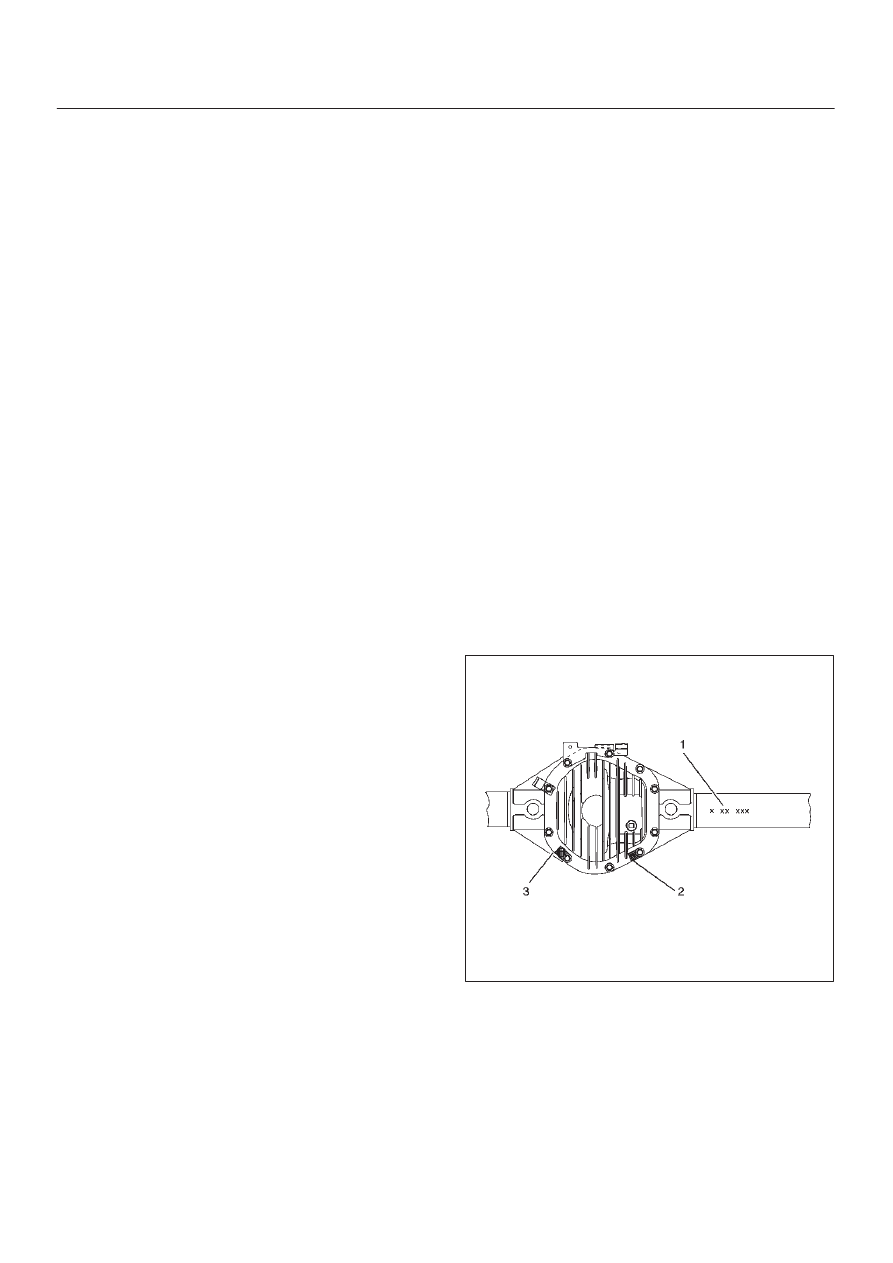Isuzu Amigo / Axiom / Trooper / Rodeo / VehiCross. Manual - part 86

4A2–2
DIFFERNTIAL (REAR)
General Description
The rear axle assembly is of the semi–floating type in
which the vehicle weight is carried on the axle housing .
The center line of the pinion gear is below the center line
of the ring gear (hypoid drive).
All parts necessary to transmit power from the propeller
shaft to the rear wheels are enclosed in a salisbury type
axle housing (a carrier casting with tubes pressed and
welded into the carrier). A removable aluminum cover at
the rear of the axle housing permits rear axle service
without removal of the entire assembly from the vehicle.
The 8.9 inch ring gear rear axle uses a conventional ring
and pinion gear set to transmit the driving force of the
engine to the rear wheels. This gear set transfers this
driving force at a 90 degree angle from the propeller shaft
to the drive shafts.
The axle shafts are supported at the wheel end of the
shaft by a roller bearing.
The pinion gear is supported by two tapered roller
bearings. The pinion depth is set by a shim pack located
between the gear end of the pinion and the roller bearing
that is pressed onto the pinion. The pinion bearing
preload is set by crushing a collapsible spacer between
the bearings in the axle housing.
The ring gear is bolted onto the differential case with 10
bolts.
The differential case is supported in the axle housing by
two tapered roller bearings. The differential and ring gear
are located in relationship to the pinion by using selective
shims and spacers between the bearing and the
differential case. To move the ring gear, shims are deleted
from one side and an equal amount are added to the other
side. These shims are also used to preload the bearings
which are pressed onto the differential case. Two bearing
caps are used to hold the differential into the rear axle
housing.
The differential is used to allow the wheels to turn at
different rates of speed while the rear axle continues to
transmit the driving force. This prevents tire scuffing
when going around corners and prevents premature wear
on internal axle parts.
The rear axle is sealed with a pinion seal, a seal at each
axle shaft end, and by a liquid gasket between the rear
cover and the axle housing.
Limited Slip Differential (LSD)
The axle assembly may be equipped with an limited slip
differential (LSD). It is similar to the standard differential
except that part of the torque from the ring gear is
transmitted through clutch packs between the side gears
and differential case.
The LSD construction permits differential action when
required for turning corners and transmits equal torque to
both wheels when driving straight ahead. However, when
one wheel tries to spin due to a patch of ice, etc., the
clutch packs automatically provide more torque to the
wheel which is not trying to spin.
In diagnosing customer complaints, it is important to
recognize two things:
1. If, both wheels slip, with unequal traction, the LSD
has done all it can possibly do.
2. In extreame cases of differences in traction, the
wheel with the least traction may spin after the LSD
has transferred as much torque as possible to the
non-slipping wheel.
Limited Slip Differntials impose additional requirements
on lubricants, and require a special lubricant or lubricant
additive. Use 80W90 GL–5 LSD lubricant.
Rear Axle Identification
The Bill of Material and build date information(1) is
stamped on the right axle tube on the rearward side.
The axle ratio is identified by a tag(3) which is secured by
a cover bolt. If the axle has limited-slip differntial, it also
will be identified with a tag(2) secured by a cover bolt.
425RX001